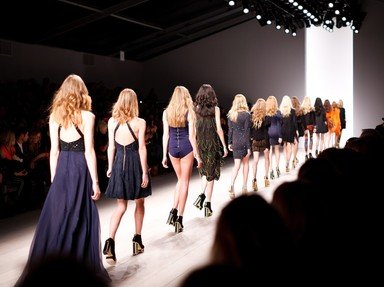Quiz Answer Key and Fun Facts
1. Worn by those of high status and even royalty, this type of stiff petticoat was seen as risqué by some due to the fact that women would be more likely to show their ankles and lower legs while maneuvering through tight spaces. What is the name for this type of underskirt?
2. This article of Indian clothing has been worn for thousands of years, and even the version that sports a bare midriff is considered traditional. That didn't stop some more conservative members of Indian society as well as Victorian colonizers from deeming it too risqué. What is its name?
3. Sometimes referred to as the "Turkish dress" or the "American dress," this lower-body women's garment was associated with a famous American women's rights activist, taking its name from her surname. What were they called?
4. The Edo Period of Japan saw an evolution of the kimono into what we consider the modern-day version. What aspect of this new style (at the time) was considered the most risqué?
5. Women weren't the only ones accused of impropriety when it came to clothing. The emergence of jazz and other African-American cultural influences in early 20th-century U.S. society led to a racist panic amongst some white Americans that forwarded the idea that men of color were trying to seduce their women. What stylish outfit was at the forefront of this fashion panic?
6. Short hemlines, loose silhouettes, sleeveless gowns, and visible stockings led to some members of Western society to decry the fashion of which 1920s subculture?
7. A cheongsam (or qipao) is a traditional dress that was considered risqué by some due to its tight-fitting nature and a leg slit that was often worn high, exposing the leg. From which country does this dress come?
8. Women of the Caucasus adopted some of their male counterparts' fashions for reasons ranging from wanting to escape restrictive female clothing to wishing to represent their cultural identity while fighting alongside men during Russian incursions. Still, some men were unhappy with it. What type of hat, shown here, did some women don in defense of their country?
9. The bikini perhaps needs no explanation on why many considered it risqué. Did the designer of the bikini really name it after the nuclear testing site of Bikini Atoll?
10. Still considered risqué in some circles, the type of shoulder strap seen in the image is named after what kind of food?
Source: Author
trident
This quiz was reviewed by FunTrivia editor
kyleisalive before going online.
Any errors found in FunTrivia content are routinely corrected through our feedback system.
